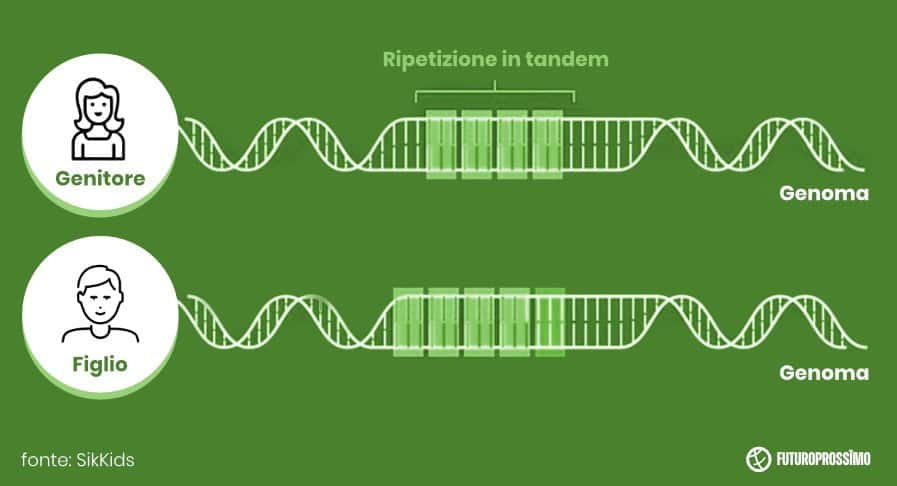In a laboratory at the Hospital for Sick Children in Toronto, scientists embarked on a hunt for the DNA of about 10.000 families, many of which have children with autism. Through this research they have identified something they call “genetic wrinkles” in DNA itself – a twist they believe may explain why some individuals find themselves on the autism spectrum.
The hope is that this could be an important new clue in autism research. It could make it possible to diagnose autism spectrum disorder early or even treat it. The Dr. Stephen Scherer, co-author of the study and director of the Center for Applied Genomics at SickKids, told CTV News that the new finding is "really exciting." “Research on tandem repeats, these particular wrinkles in the DNA, reveals a whole new class of genes that we didn't previously know were involved in autism,” he said.
We know they are involved in brain function but we don't know how they fit the puzzle
Stephen Scherer
New challenge, new goal
Current research estimates that genetic factors should be found in 50 to 90 percent of people with autism spectrum disorders. Scientists already know about 100 genes that play a role in the development of autism, but these genes explain only less than 20% of cases.
To delve further into these genetic components, researchers had to “develop new methodologies,” Scherer said. Ryan Yuen, the team leader of this new studio, took up the challenge. Nine years ago, he developed a “new computational approach,” which allowed him to look for specific features within the DNA itself and compare the patterns found in individuals with autism to their parents or “other controls in the population.”
Now they have found that sections of parents' DNA are sometimes doubled – or, in some cases, tripled – in their children. A phenomenon called “tandem repetition” (that's what it is). “Tandem repeats are nucleotides, the building blocks of DNA, repeated next to each other two or more times.” “They're like wrinkles in DNA.”
As these “wrinkled” strands of DNA are replicated, the repeat can stretch, which is why a tandem repeat present in a parent's DNA could expand from parent to child. The larger these wrinkles are, the more likely they are to interfere with gene function, even contributing to autism spectrum disorder.

Autism spectrum disorder, today it is less complicated to look for its causes
Tandem repeats had already been studied individually, but it was difficult, since they had to be looked for one gene at a time. Since there may be a million tandem repeats in the genome, identify the tandem repeats that actually contribute to autism it would have been like looking for a needle in a haystack.
“In this study we have pioneered a method that can effectively search and analyze terabytes of whole-genome sequencing data to find tandem repeats,” he said Yuen. “Many of the genes linked to these repeats had never before been considered among those involved in autism.”
Some of the newly identified genes include those involved in the nervous system. And the location of the tandem repeat within the DNA itself is associated with “certain characteristics and behaviors such as IQ and life skills,” the press release reads. “This is truly a turning point for autism and genomics research,” Yuen said. “It opens up new opportunities in diagnostics and precision medicine.”
Anomalies in DNA like music
One of the really interesting discoveries made in this study is the identification of about a million different points in the human genome that are capable of expanding and contracting. “It's kind of like an accordion. If they extend to a certain extent, the music that is played by the DNA or the instrument has a different tone.”
Scherer, who has been studying autism spectrum disorders for nearly two decades, is thrilled with the findings.
This is the most exciting progress we have had in 15 years.
Stephen Scherer
The implications of this discovery on autism
The discovery may lead to improvements in genetic testing, a boon for families and individuals with autism spectrum disorder who want to answer a key question: Why? Yuen believes this research will “impact thousands of families” and allow scientists to provide countless autistic individuals with a clear explanation for their autism by looking at their genes. “People with autism can also have serious medical conditions,” she added. “So identifying these tandem repeats can provide crucial information for families and caregivers.”
Also Kristen Ellison, who lives in Cobourg, Ontario, is thrilled with the study. His son, Carter, is nine years old and autistic. He was diagnosed with autism when he was just two years old. “We're at the beginning of this research and I don't know if it will have an immediate impact,” he says. “But I hope that one day it improves the quality of life of people with autism.”
Multiple types of autism
Another corollary to the discovery is that it actually adds at least 15 new types of autism. “Depending on the type of autism you have,” says Scherer, you can think about activating a type of approach or treatment. Researchers suspect that these genetic wrinkles may also play a role in other complex brain-related conditions such as epilepsy and schizophrenia.
Now that scientists have the tools to identify these "wrinkles" in DNA, they can try to find a way to fix them. “This is a major scientific advance in understanding autism and will be life-changing,” Scherer said.


